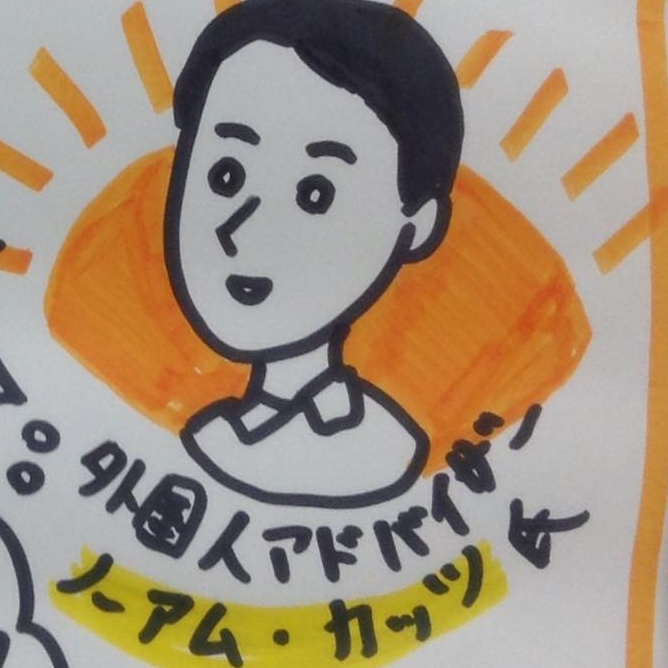4 Days in Tohoku's Treasureland
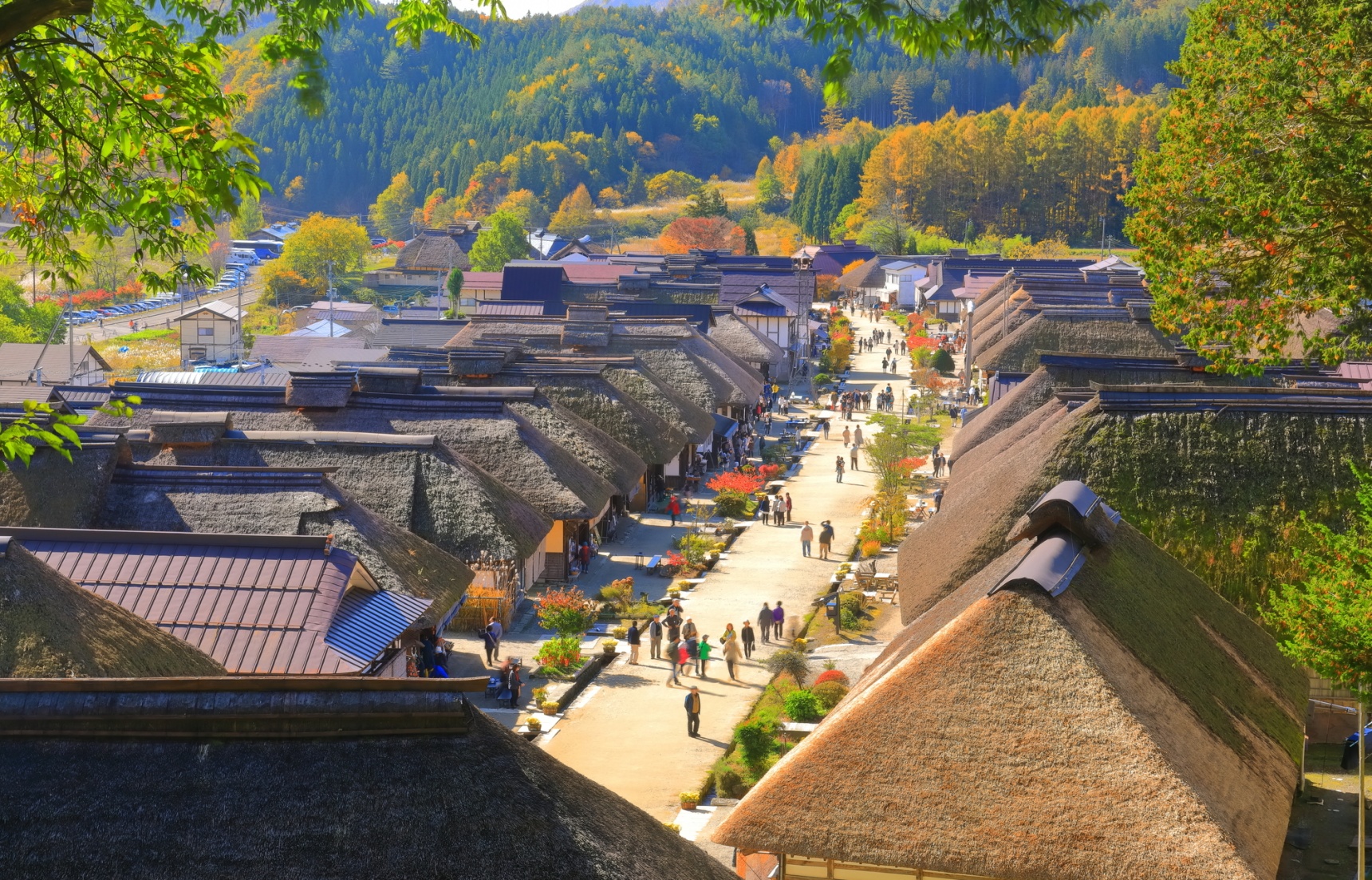
Japan’s northeastern region of Tohoku was once considered a remote, inaccessible land. Today, the Tohoku Shinkansen and other modes of transport have made it easier than ever to explore its unique traditions, uncrowded historical districts, and stunning natural scenery.
By Noam KatzTo uncover what this fascinating region had to offer, I set out on a short journey to three of Tohoku’s six prefectures: Fukushima, Yamagata, and Akita.
Day 1
Ouchijuku
After departing Tokyo Station, the Tohoku Shinkansen sped to Fukushima’s Shin-Shirakawa Station in just over 90 minutes. From here, I rode by car to visit Fukushima’s scenic old post town of Ouchijuku (大内宿). Strolling down its unpaved dirt road, surrounded by thatched-roof wooden buildings on either side, I could easily imagine passing through as a foot-traveler in Japan’s feudal days.
Restaurants presented a more unusual sight; patrons seemed to be scooping up soba (buckwheat noodles) using a long, green leek in place of chopsticks. Finding out this was a local specialty known as Takato-soba, I ordered a bowl at Misawaya and tried to imitate those around me. My noodles slid off several times, but I ultimately got the hang of it—arguably easier than learning to use chopsticks—and didn’t leave hungry.
http://ouchi-juku.com/ (Japanese only)
http://www.misawaya.jp/ (Japanese only)
No. 1 Tadami River Bridge
Next, as we drove through a mountainous section of inland Fukushima known as Oku-Aizu, views of thick forests, steep canyons, and far-off mountains lightly dusted with snow were too stunning to ignore. Thanks to a light rain earlier that day, we even managed to glimpse the “sea of clouds” phenomenon, when fog fills in a valley like bundles of white cotton-candy.
But the real highlight of this drive was a stop for the scenic No. 1 Tadami River Bridge (第一只見川橋梁). There are various vantage points just a short walk from the Michi-no-eki Mishimajuku (道の駅みしま宿) where I could gaze at this arched railway bridge, which was reflected in the mirror-like waters of the Tadami River below. If the timing is right (and mine wasn’t), you’ll even catch the green and white JR Tadami Line train passing across.
https://www.michi-no-eki.jp/stations/view/243 (Japanese only)
Sampling Awa-manju
A short drive away was Yanaizu, a town based around the 1,200-year-old Fukuman Kokuzo Bosatsu Enzoji Temple. One local delicacy here is awa-manju, a steamed traditional confectionery made of bright yellow millet covering a soft core of red bean paste.
There are a number of awa-manju specialty shops in town. We visited one of the oldest, Koike Confectionery Shop (小池菓子舗), unmistakable for the clouds of steam billowing out of a pipe in the wall. Dinner was still a few hours away, I rationalized to myself with the first (then second) awa-manju, savoring the millet’s fluffy texture and mild sweetness of the bean filling.
http://koike-manjyu.com/index.html (Japanese only)
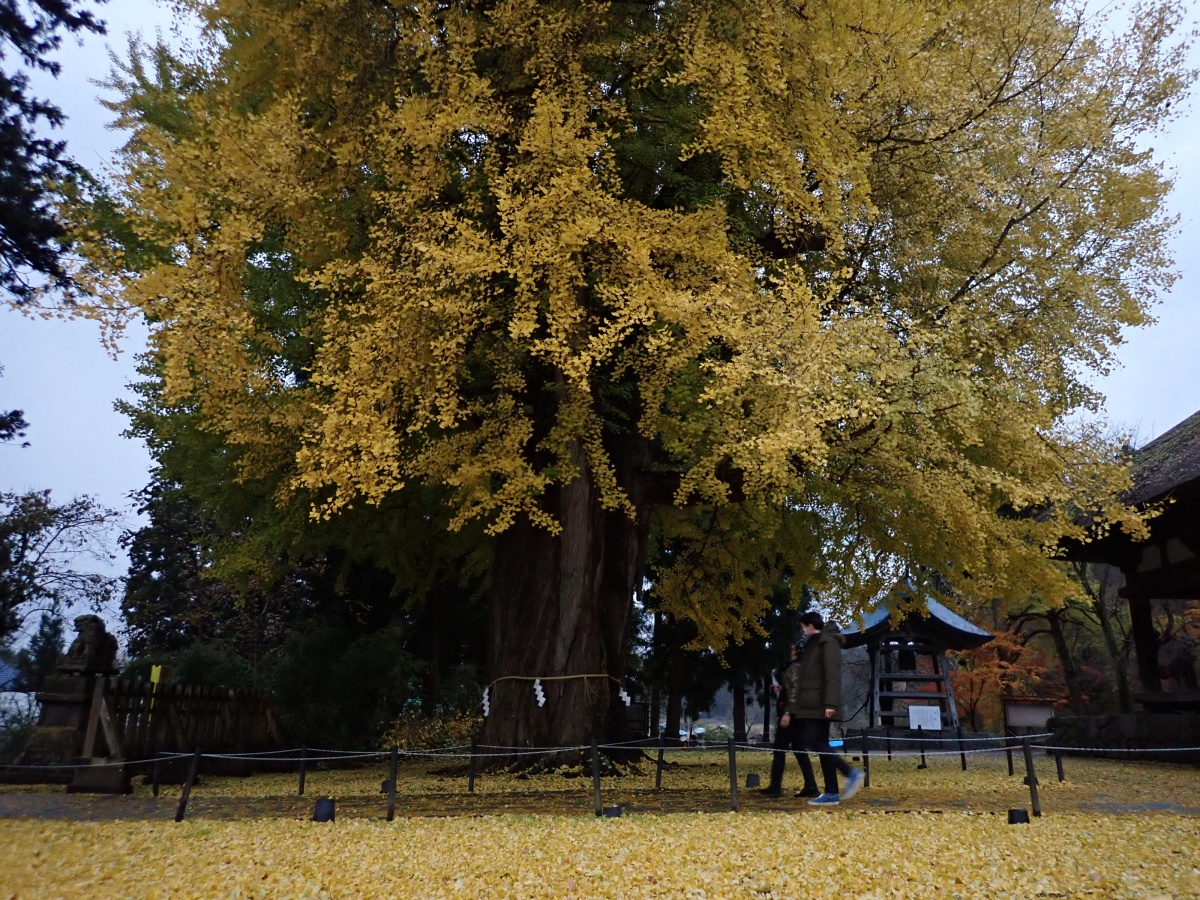
Shingu Kumano Shrine
Before leaving Oku-Aizu, we made one last stop: Shingu Kumano Shrine (新宮熊野神社). This ancient Shinto shrine is home to two treasures, one human-made and one natural. Strolling up the tree-lined approach, my eyes were drawn to the Nagatoko, a large, unusually open worship hall constructed in 1055 that is also a National Important Cultural Asset.
Standing alongside it was a massive gingko tree reported to be some 800 years old. Every November, its yellow leaves shower the ground and create a golden carpet. Even after arriving late in the afternoon on a cloudy day, I was still struck by the beautiful collaboration of these two sights.
Day 2
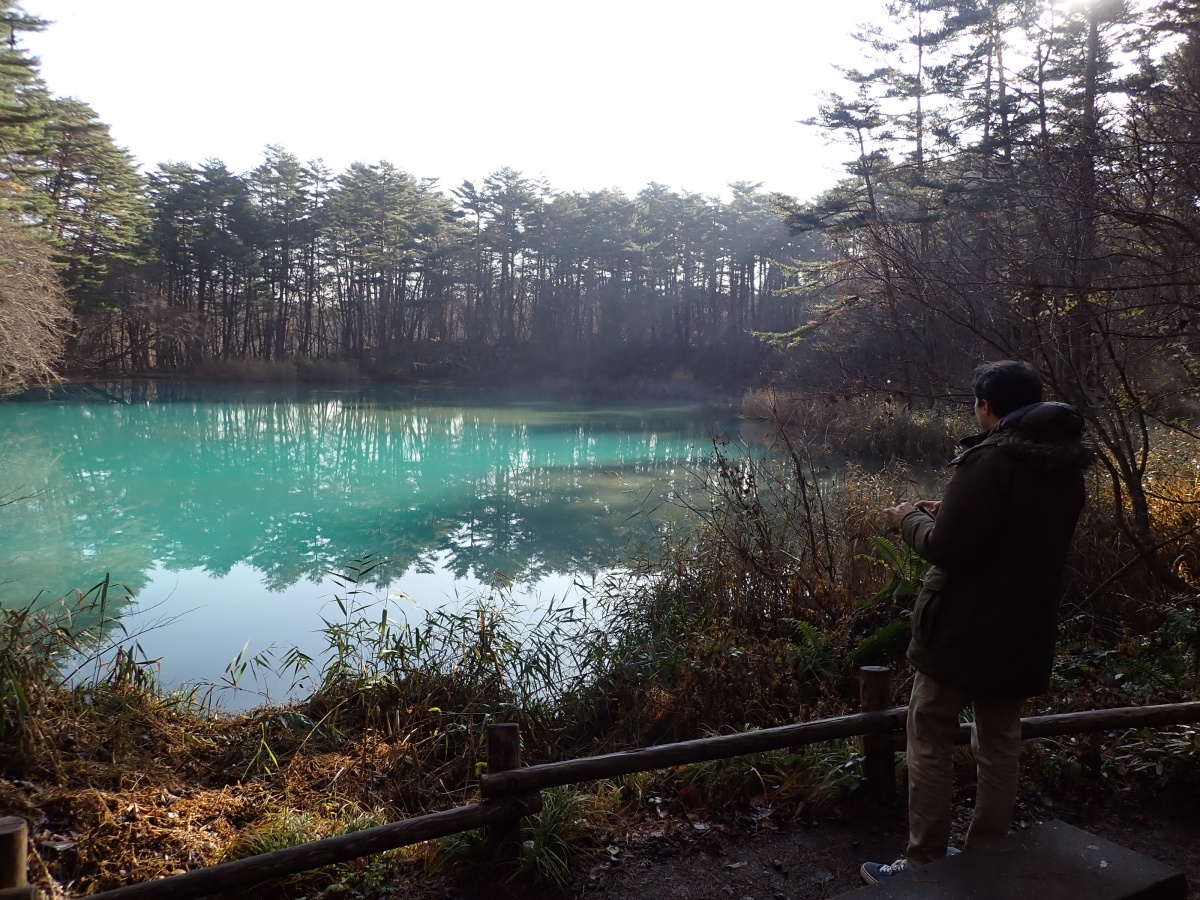
Goshiki-numa
Having stayed in the Urabandai area the previous night, it was just a short drive in the morning to visit a series of marsh-like ponds known as Goshiki-numa (五色沼). Located in the Bandai-Asahi National Park, these were formed after Mt. Bandai erupted in 1887.
Volcanic substances such as allophane leached into the ponds, coloring the waters with hues that range from rusty red to emerald green, depending on factors such as weather and time of day. A short walk from the Bussankan—a shop purveying souvenirs and local goods—brought us to Aonuma (literally “blue pond”), and true to the name, the morning rays of sun revealed a vibrant turquoise color.
https://www.urabandai-inf.com/en/?page_id=141
Yamagata Beef at Sagoro
Just a mere five-minute walk from Yamagata Station, Yamagata beef specialist Sagoro (佐五郎) has been satisfying customers’ cravings for premium meat since 1910. Yamagata’s hot summers and cold winters are said to nourish cattle that produce fine-grained meat and fat, which explains why Yamagata Beef is one of Japan’s top-grade wagyu brands.
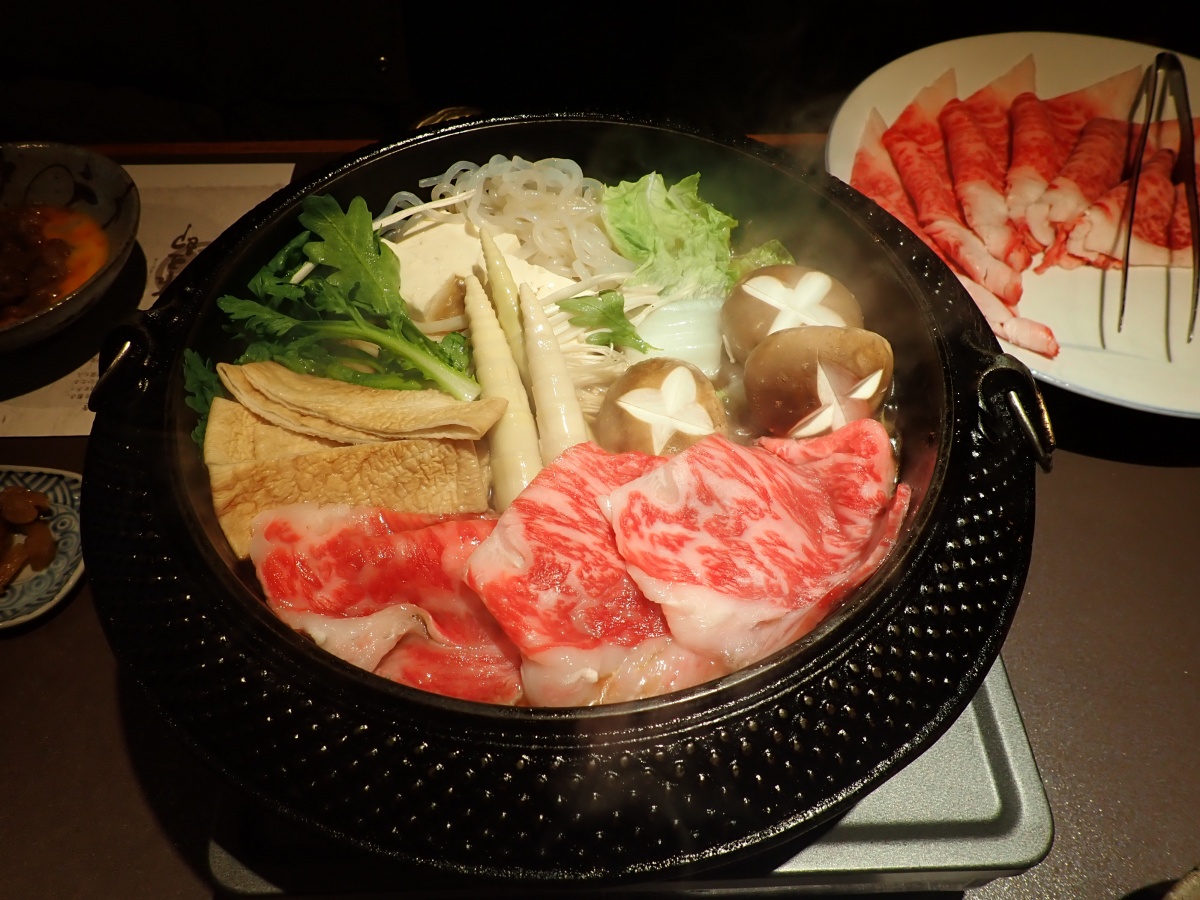
After the drive from Fukushima into Yamagata, our stomachs were more than ready to confirm this reputation with Sagoro’s sukiyaki-style beef hot pot. The server started cooking the thin slices of marbled beef, adding in glass noodles, tofu, and vegetables such as scallions, and enoki and shiitake mushrooms. The succulent, tender beef was every bit as good as we were led to believe. Besides hot pot, Sagoro also offers shabu-shabu, regular steak, and hamburg steak as well.
https://www.sagoro.jp/ (Japanese only)
Yamadera & Tarumizu Iseki
With most of its beautiful wooden buildings perched on steep cliffs, Yamadera (山寺), or Risshakuji Temple (立石寺) as it is officially known, is one of Tohoku’s most famous historical sites. Founded in 860, you'll have to climb 1,015 steps to reach the Okunoin, the heart of this mountain temple complex. The climb is rewarded with a spectacular view of the valley down below.
Concealed in the forest to the right of Yamadera is a little-known set of ruins called Tarumizu Iseki (垂水遺跡). Appearing like something from an Indiana Jones film, a series of caves and cubbies set in a pockmarked cliff mark what was once the site of ascetic religious training, with use allegedly predating Yamadera, and continuing through the early 1900s.
In one section, footholds carved into the cliff rock lead up to a small wooden torii gate before a large cave, while elsewhere a Buddhist statue looks down from high on a cliff wall, offering hints to the religious rites that once transpired here.
https://www.rissyakuji.jp/ (Japanese only)
Introduction to Iaido
Yamagata’s Murayama City is home to the founder of iai, or the art of Japanese swordsmanship. While fundamentally more about philosophy and self-improvement rather than fighting, Iaido emphasizes alertness and teaches practitioners how to draw the sword quickly from its scabbard and make cuts almost reflexively fast.
Near the Iai Shrine, I joined a short program to experience this unique art. After practicing techniques such as drawing, striking and sheathing the sword with a replica, I wielded an authentic 1.3 kg sword to slice through a tatamizutsu rolled straw mat. Though the mat thickness was comparable to a pig’s leg, I hardly felt any resistance, and this certainly gave me a whole new appreciation for Japan’s samurai.
https://en.iaidoexperience.com/


